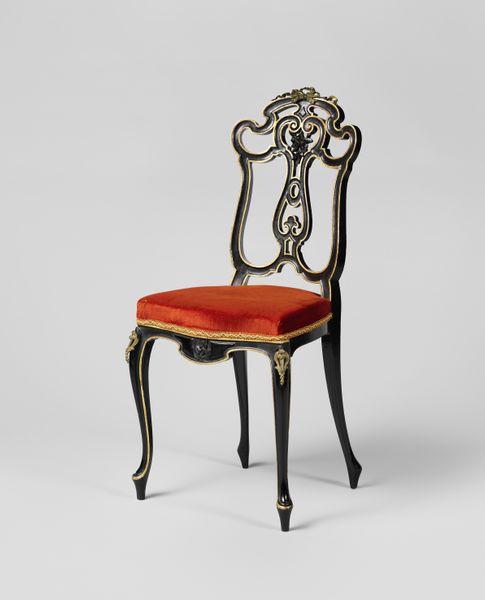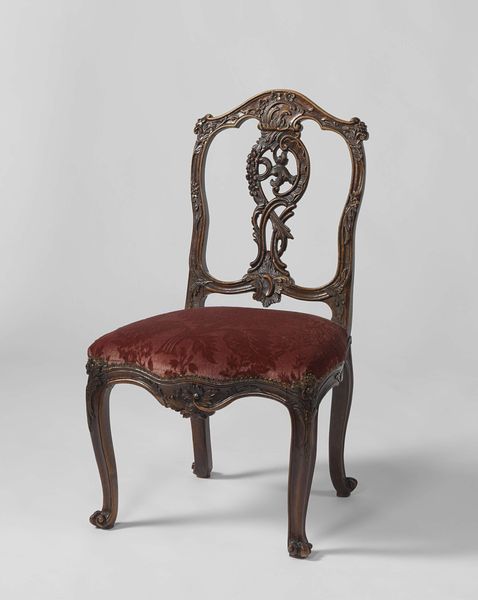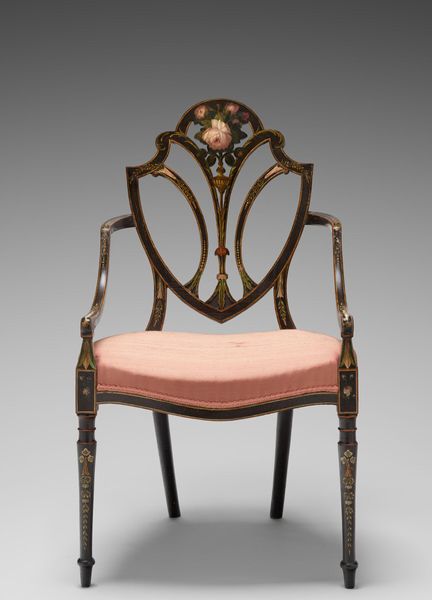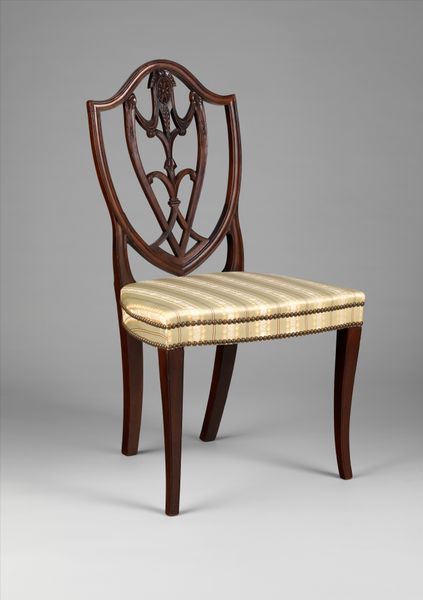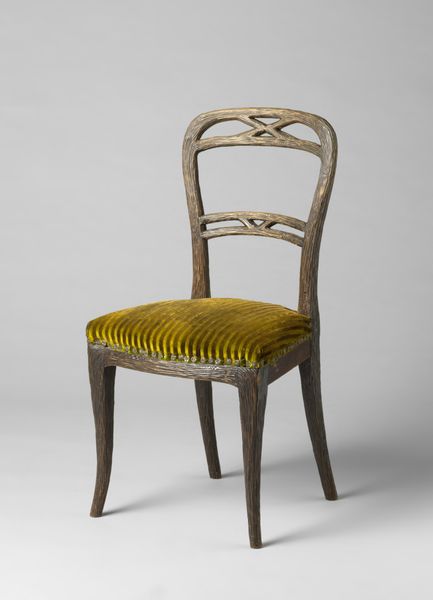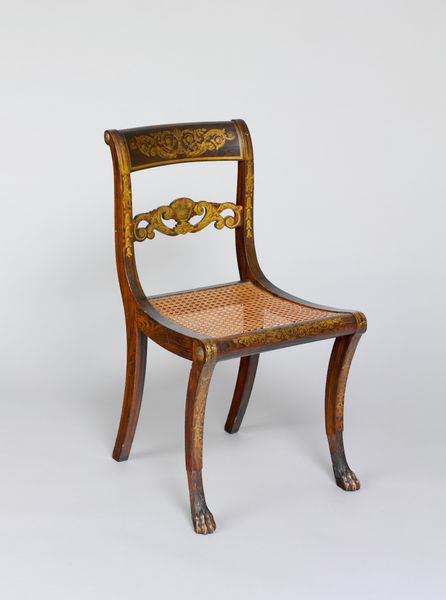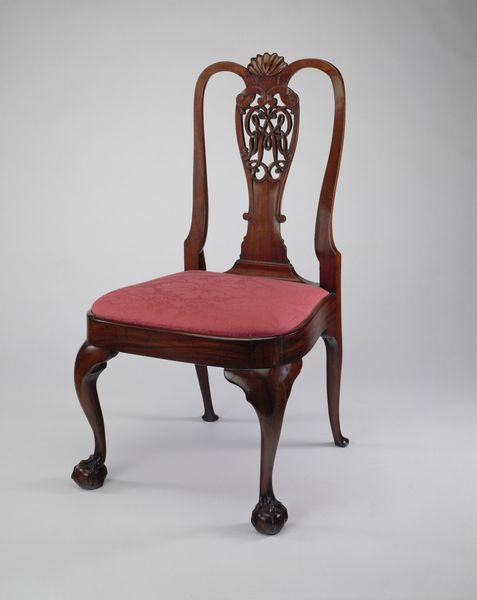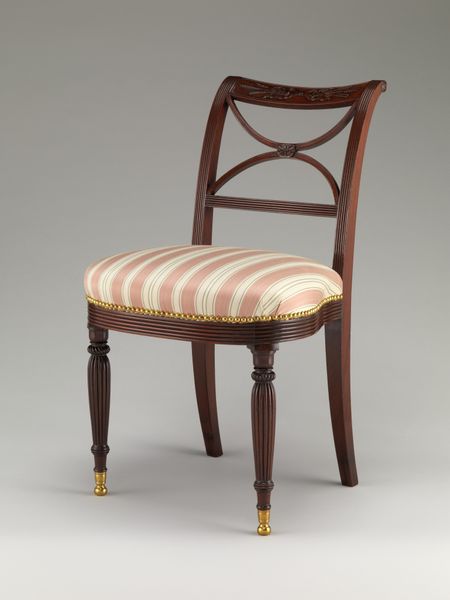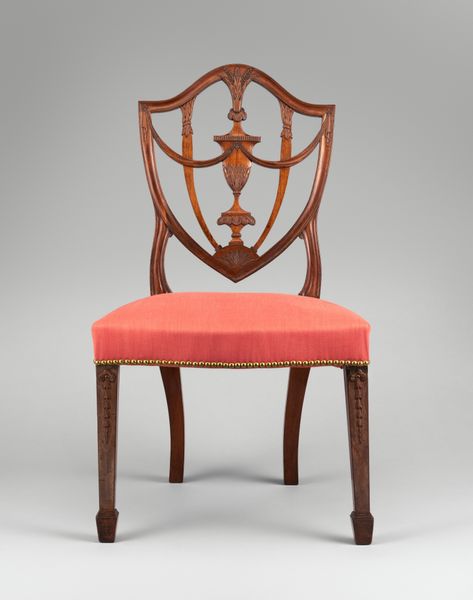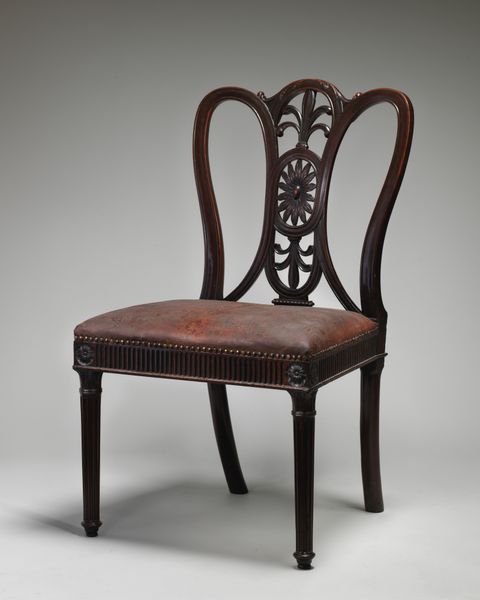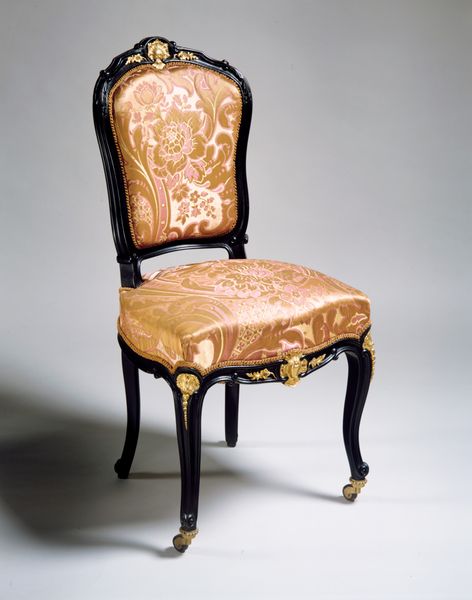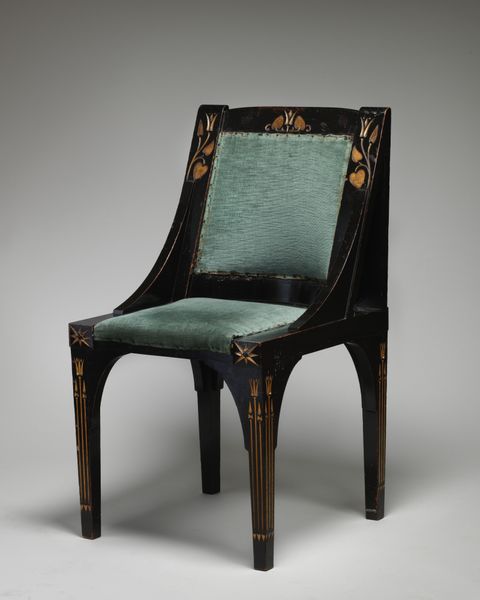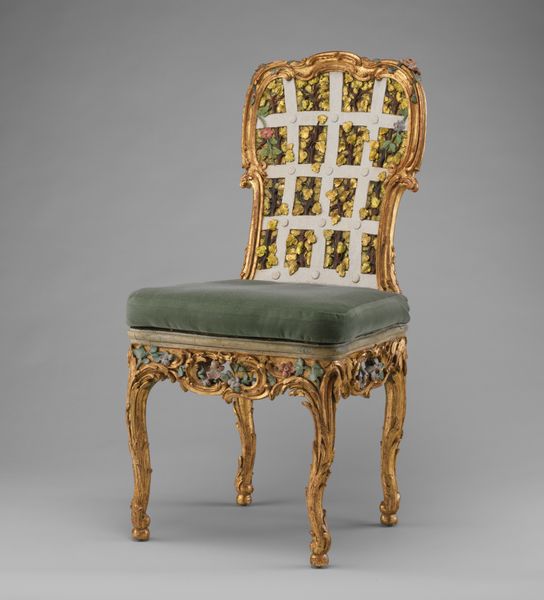
Stoel, afwisselend glanzend en dof zwart geschilderd en versierd met vergulde randen en enkele goudkleurige beslagstukjes. Bekleed met oranje velours c. 1865 - 1875
0:00
0:00
Dimensions: height 94.5 cm, width 45.0 cm, depth 41.0 cm, height 48.5 cm, depth 37.0 cm, weight 4.2 kg
Copyright: Rijks Museum: Open Domain
Curator: The interplay between gleaming and matte surfaces certainly grabs you right away, doesn’t it? The juxtaposition feels rich and almost playful. Editor: It's striking how imposing it appears despite being "just" a chair! I’d be fascinated to research its function and position within the social structure. But let's begin by observing the work: This chair, made by Gebroeders Horrix circa 1865-1875, combines paintwork and gilding over a wood frame with textile. Curator: Horrix made furniture? This decorative chair provides an opportunity to discuss late 19th century techniques in woodworking, painting, and upholstery, revealing how “luxury” was achieved through varied applications. I see wood construction, applications of gesso for a smooth painting surface, the painterly techniques to play with reflective values in the black surfaces, and then the considered application of real gold. Editor: Absolutely! The production choices made in this era were strategic responses to historical tastes. Its creation reflects a resurgence of neoclassical and decorative art trends within court circles and wealthy families across Europe who were trying to imitate Royalty. The choice of the deep orange velour clashes pleasingly against the somber background. This wouldn't just have been a chair; it signaled an adherence to traditional ideas of beauty and power. Curator: Yes, the textures elevate the chair. This is not only the use of tactile textiles for the seating surface, but I note different surface preparation and painting choices for alternating shiny or non-reflective surfaces in the woodwork. Those textures draw you into the maker's studio and offer some consideration of hand skills, time, and economic status involved in owning the work. Editor: This piece exemplifies the politics of display—the chair as a marker of social distinction, its placement, the context for whom, how, where! Did its owners truly understand the traditions, or were they chasing fleeting aristocratic fashions? Curator: I find my attention fixed on this push and pull of handmade quality and applied luxurious elements. It presents complex considerations about production and maker skill. Editor: It reveals interesting insights into material, design, manufacture and distribution networks, if only to show those elites’ social aspiration!
Comments
No comments
Be the first to comment and join the conversation on the ultimate creative platform.
